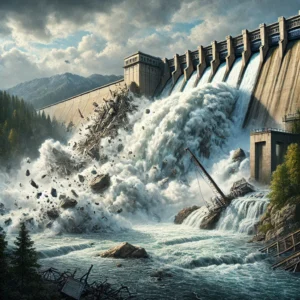
On July 10, 1887, Switzerland experienced a devastating tragedy when a dam collapsed, causing a catastrophic flood. The dam failure resulted in a torrent of water that surged through the surrounding areas, sweeping away homes, businesses, and farmland. Approximately 70 people lost their lives in the disaster, with many more suffering from injuries and loss of property. The immediate aftermath was marked by a frantic search and rescue operation, with survivors and rescuers working tirelessly to find and aid those trapped by the floodwaters. This event profoundly impacted the local community, leaving behind a legacy of grief and resilience.
The tragedy highlighted significant flaws in the engineering practices of the time. Early dam construction often lacked the rigorous standards and advanced materials available today, making such structures vulnerable to catastrophic failures. The collapse of the dam in Switzerland underscored the urgent need for improved engineering techniques and better safety protocols. In response to this disaster, engineers and policymakers around the world began to scrutinize existing dam designs and construction methods more closely. This led to the development of more robust safety standards and the implementation of stricter regulations governing the construction and maintenance of dams.
The 1887 dam collapse in Switzerland serves as a somber reminder of the potential human cost of infrastructural failures. It emphasizes the importance of continuous improvement in engineering practices and the implementation of stringent safety measures to prevent such tragedies. The lessons learned from this disaster have contributed to the advancement of civil engineering and have helped to ensure that modern dams are built to withstand various stresses and potential hazards. Today, the memory of the lives lost and the destruction caused by the flood serves as a powerful motivator for ongoing vigilance and innovation in the field of dam safety.
